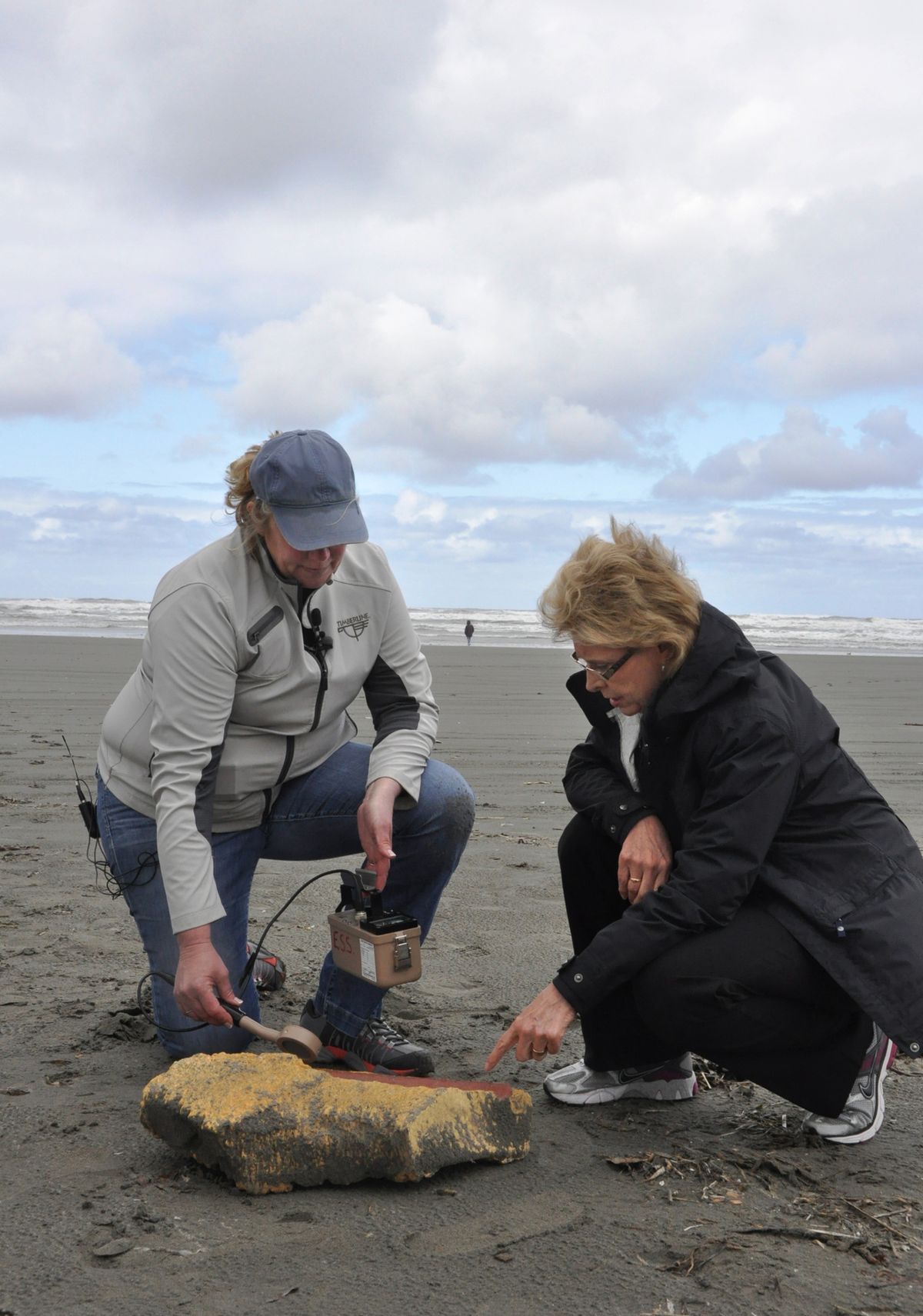Protecting shoreline from tsunami rubble

OCEAN SHORES, Wash. – The state is preparing for an unknown amount of debris from the Japanese tsunami to wash onto its beaches over the next several years, possibly carrying strange creatures but probably not radiation.
As she announced a Clean Shoreline Initiative Monday to muster state agencies to help handle the cleanup of that debris, Washington Gov. Chris Gregoire said it’s too early to estimate what the effort may cost the coastal communities or the state. But Washington is already serving notice on the federal government it expects financial support.
“We are in for a steady dribble over the next few years,” Gregoire said at a news conference at the Best Western Lighthouse Inn. State officials demonstrated on a nearby stretch of Pacific Coast beach how they check suspicious debris for radiation, even though they don’t expect to find any traces of contamination from the releases from reactors after the 2011 earthquake.
“We have no – let me repeat, no – readings that are out of the ordinary,” Gregoire said.
That’s likely to be the case for most or even all debris from the tsunami for several reasons, Department of Health Director Mary Selecky said. First, the reactors were on only a small portion of more than 100 miles of coastline hit by the tsunami. Second, the debris had already been swept into the Pacific several days before the radiation was released from Fukushima.
There is also no sign yet of radiation in any migratory fish that have been tested, like steelhead or Chinook salmon, Selecky said.
One thing state and federal officials weren’t expecting, however, was the presence of foreign, and possibly invasive, species on some debris, like a Japanese dock that washed up on a beach in Oregon. Washington state has experts at the Ecology and Fish and Wildlife departments on tap for inspecting suspicious objects, like a boat that washed ashore near Ilwaco last week.
No invasive species were found on that boat, Gregoire said. That’s probably because a stationary structure like a dock would accumulate a wide variety of species, as would some derelict vessels, but a boat that is being used, and regularly cleaned, wouldn’t.
Debris that is thought to have made its way across the Pacific is starting to wash ashore from British Columbia to California, but state officials can’t be sure how much is from the tsunami, because debris is always washing up on West Coast beaches.
Larry Thelvik, who operates a crabbing boat out of Ocean Shores, said his crew picked up a 500-pound “raft” of likely tsunami debris on May 31. It was a series of fishing floats that became entangled and picked up other items. He said he’s worried about debris carrying off crab pots or harming the crab harvest, although there’s no sign of that yet.
Local communities rely heavily on tourism, and state officials are worried that reports of debris could lead to fewer visitors, although state Rep. Steve Tharinger, D-Sequim, said the opposite may be happening right now, with curiosity boosting visits a bit.
Local communities are concerned they won’t have the resources to pay for the cleanup and disposal of the added debris.
The Ecology Department has redirected $100,000 in its budget to help with some cleanup efforts, but cities and counties may need more, and the state doesn’t have much flexibility in its emergency budget, either.
“We have very limited resources. That’s why we’re turning to the federal government,” Gregoire said. The National Oceanic and Atmospheric Administration is in charge of debris cleanup, she added.
In the next two weeks, state officials are expected to produce a draft of a plan that is flexible enough to deal with a wide variety of changing circumstances but give some idea of costs.
At this point, the debris coming ashore is not at a level where Gregoire can declare an emergency to seek help from the Federal Emergency Management Administration.
In the meantime, state officials say they will lean heavily on a traditional source of beach cleanups, volunteers who walk the wide stretches of the Pacific Coast and clean up a wide array of litter and flotsam and jetsam that comes in with the tides.
For those volunteers, the state has some advice:
First, not everything you see on the beach is from the tsunami.
Second, if you see something suspicious, call the Department of Ecology hotline, 1-800-OILS-911, which will send out teams as necessary.
“Follow your common sense,” Gregoire said. “Safety first.”